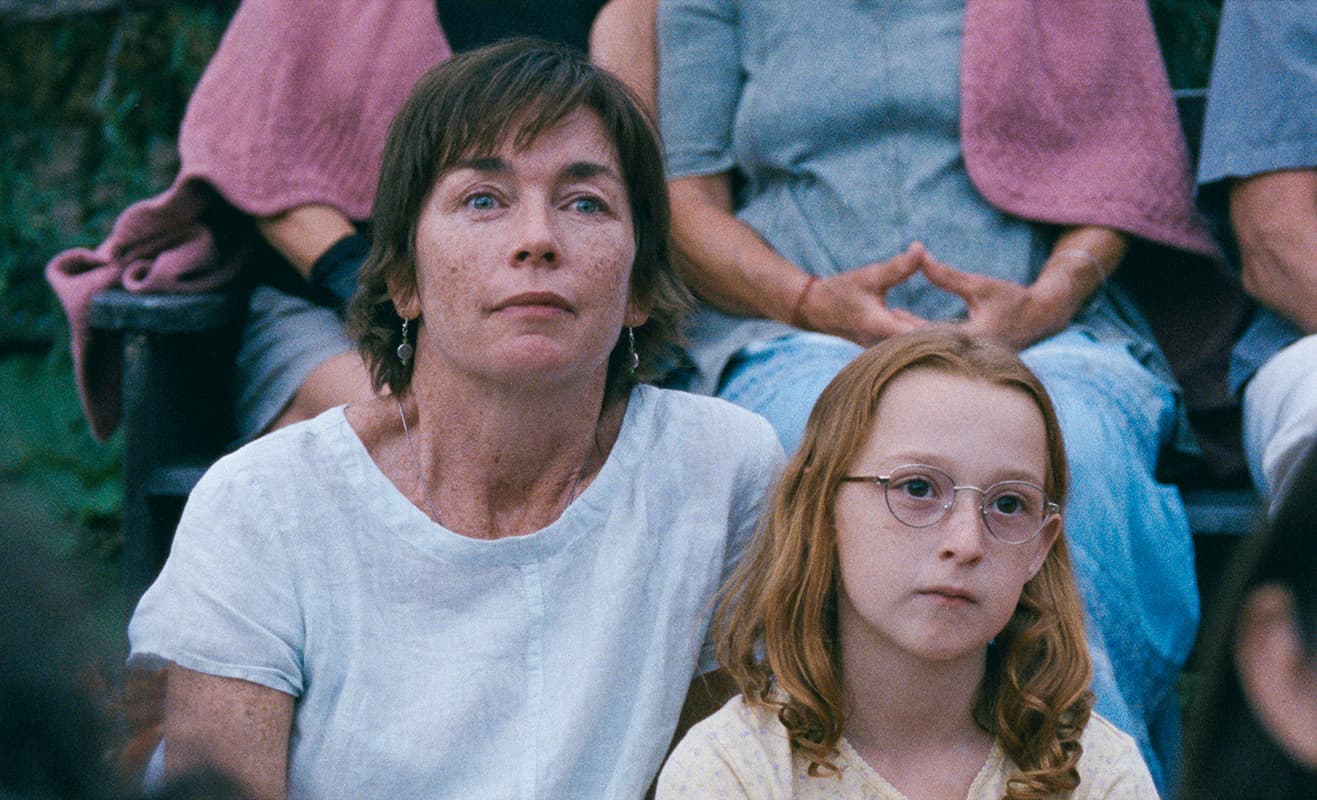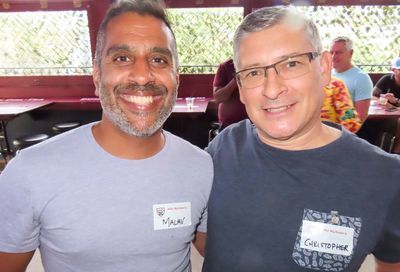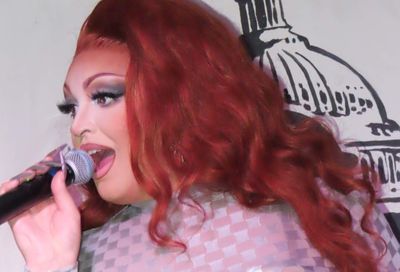The Eyes of Tammy Faye humanizes the late, larger-than-life televangelist
Screenwriter Abe Sylvia and actress Cherry Jones on why Tammy Faye Bakker remains relevant to this day

“When this scandal hit, I was in sixth grade in Norman, Oklahoma,” says Abe Sylvia, the 46-year-old screenwriter of The Eyes of Tammy Faye. “I grew up a closeted gay kid in the Bible Belt and here is this lady in the middle of a sex scandal. It all just felt so tawdry and exciting.
“It’s only forty years later, when I did a deep dive and got under the hood of what was really going on there — both emotionally within her marriage and politically — that I found a fascinating story. She and Jim were pawns of a greater political movement that we’re seeing play out before us to this day, in a myriad of amplified ways, frankly.”
Sylvia’s adaptation of Fenton Bailey and Randy Barbato’s profoundly entertaining 2000 documentary, also titled The Eyes of Tammy Faye, focuses squarely on Tammy Faye Bakker, she of the spackled-on makeup, massive, over-permed wigs, and Godzilla-sized eyelashes.
Anchored by a magnetic, transformative lead performance by Jessica Chastain, the movie strives to humanize the late, larger-than-life televangelist, whom history has relegated to the parody bin. T-shirts at the time of the scandal, for instance, bore a likeness of Tammy Faye’s face as an impressionistic “makeup” splatter, bearing the words “I ran into Tammy Faye.”
But Sylvia’s screenplay — along with Michael Showalter’s clipped, no-nonsense direction and Chastain’s astonishing performance — aim to course-correct by humanizing Tammy Faye, depicting her as someone genuinely compelled by her faith to spread the gospel of love and Christianity — and not just rake in the cash, though she certainly didn’t turn down the amenities that came from her tenure at the PTL Club.
In the movie, the avarice and sins are mostly relegated to Jim Bakker, played with deliberate, unassuming blandness by Andrew Garfield. Jim, who is still conning followers to this day, fleeced his ministry for all its worth and served jail time for it. (Tammy Faye, who later remarried, passed away in 2007.)
“I was grown by the time they were in their heyday and moving to their demise,” says Cherry Jones, who plays Tammy Faye’s stern, disapproving mother, Rachel. “We’d just get stoned and watch the PTL Club. And it was so much fun.
“But it’s interesting to me, given where we are now in this country, that Jim Bakker and Tammy Faye and Pat Robertson and Jerry Falwell and all those televangelists were taking off and in bed with Reagan and the Republican caucus.
“At the same time, Margaret Atwood was writing The Handmaid’s Tale as a direct commentary on what was going on in the United States with the whole religious-political power grab of these power-hungry men who wanted to have complete control over their lives, their families, their communities and their country, by God.”
The Eyes of Tammy Faye, which opens exclusively in theaters this weekend, is notable for its depiction of the rise of the religious right, mainly personified here by Falwell, portrayed with chilling, quiet menace by Vincent D’Onofrio.
It also shows, quite pointedly, how Tammy Faye attempted to bring change to a religious system that wasn’t inclusive. Her defense of the LGBTQ community throughout the film is an irritant to both her husband, later alleged to have had a homosexual affair with his assistant, and to Falwell, who would prefer Tammy Faye keep silent and just sing her Bible-thumping pop songs.
The movie includes a key moment in which Tammy Faye interviews, via closed-circuit TV in 1985, Steve Pieters, a gay man afflicted with HIV/AIDS. (Pieters is still alive and thriving.)

Her interview — depicted here as a rogue event — was historic for both the LGBTQ and religious community, coming at a time when the AIDS epidemic was seen as “a gay plague” and not even addressed publicly by President Reagan. There is no doubt, through Chastain’s portrayal, that Tammy Faye’s heartfelt interview with the man comes from a genuine, loving place.
“No one was more vicious to Tammy Faye than gay men, just because she was so much fun to mock,” says Jones, a member of the LGBTQ community. “All you needed was a knife to the mascara and you were off to the races. And yet everything changed when she interviewed the man who was ill with AIDS. She was able to find a gay man who was a Christian and had Christian faith and who had a family who was loving him unconditionally.
“That she was able to use that as an example of the way all Christians should be embracing those with AIDS — well, when I read that in the script, I just thought how useful a tool that was to show what life can be like when you are kind, with an open heart. That moved me as much as anything in the entire film.”
“Tammy Faye Bakker meant so much to me because she is a woman who lived her truth openly and shamelessly and in the face of almost insurmountable scorn and humiliation,” says Sylvia. “She kept moving forward.
“For gay men of a certain generation, we didn’t have those role models from within our own community because we weren’t talked about [favorably] by the media. We didn’t have examples on the television.
“So here is this woman who is living out and proud, almost embarrassingly shamelessly. And I think there is an identification, and there’s a transference that happened for me. There is an identification. And then for her to return that love — there is a circle of being seen. Certainly that’s what has always drawn me to her.”
The Eyes of Tammy Faye is playing exclusively in theaters, including Landmark’s E Street Cinema and Bethesda Row Cinema and The Avalon Theatre. Visit www.landmarktheatres.com or www.theavalon.org for showtimes and current COVID policies.
Read More:
Stage Review: Quixote Nuevo at Round House
Movie Review: Everybody’s Talking About Jamie
BHT Foundation doles out more than $35,000 to local LGBTQ and HIV nonprofits
Support Metro Weekly’s Journalism
These are challenging times for news organizations. And yet it’s crucial we stay active and provide vital resources and information to both our local readers and the world. So won’t you please take a moment and consider supporting Metro Weekly with a membership? For as little as $5 a month, you can help ensure Metro Weekly magazine and MetroWeekly.com remain free, viable resources as we provide the best, most diverse, culturally-resonant LGBTQ coverage in both the D.C. region and around the world. Memberships come with exclusive perks and discounts, your own personal digital delivery of each week’s magazine (and an archive), access to our Member's Lounge when it launches this fall, and exclusive members-only items like Metro Weekly Membership Mugs and Tote Bags! Check out all our membership levels here and please join us today!
























You must be logged in to post a comment.